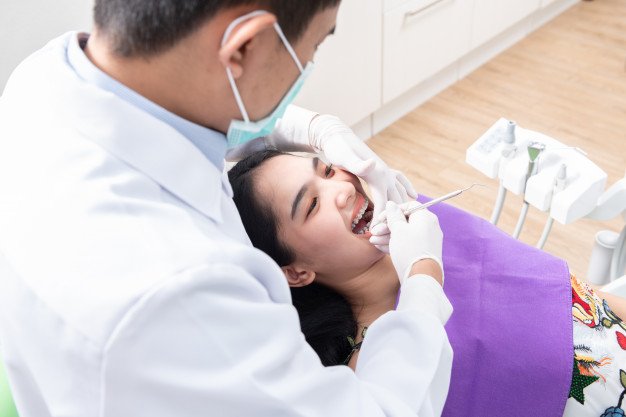We are living in increasingly computer-dominated times. Only ten to fifteen years ago, computer skills were considered a bonus. Nowadays, being able to operate a computer for prolonged periods of time is all but required. While computers have made our lives difficult, they’ve also introduced a host of physical problems.
Due to the rise in computer use, carpal tunnel syndrome has found new life in modern America. As a result, countless people are either dealing with the onset of carpal tunnel syndrome or are actively fighting to prevent it from happening. Today, we are going to be discussing a few ways you can prevent carpal tunnel syndrome from impacting your life.
Keys to Avoiding Carpal Tunnel Syndrome:
Carpal tunnel syndrome is a condition that can impart numbness, tingling, and pain in your hand and arm. This condition is typically caused by compressed nerves in your wrist and on the side of your palm. There are many reasons as to why someone would begin to develop carpal tunnel syndrome.
Most commonly, most modern carpal tunnel syndrome diagnosis comes from incorrectly using a computer mouse. Fortunately, there are a variety of ways that you can approach using your computer in order to prevent carpal tunnel from ever manifesting. Let’s go ahead and outline a few key ideas below.
1. Use An Ergonomic Mouse:
The easiest way to reduce stress on your wrist while negating the potential for carpal tunnel is by purchasing an ergonomic mouse. When you use a computer, the mouse that you operate will be instrumental to your health and your overall computer experience. The shape of your mouse needs to be conducive to your hand size. The ideal ergonomic mouse will be symmetrical in shape rather than curved.
A curved mouse will lead to odd contours in your hand which will promote stress and improper ergonomic support. Who knew that getting the right mouse was so important?
2. Larger Is Better:
If you are planning on purchasing a new mouse for your desktop computer, consider buying something a little larger than normal. When it comes to your daily mouse usage, you are better off opting for something larger in size. Why is this the case? A smaller mouse will most likely improperly fit your hand, thus leading to odd extensions and contractions.
A larger mouse will provide you with palm support which will aid in your quest to maintain proper ergonomic control of your hand. While this sounds needlessly specific, the truth is that size matters when shopping for a computer mouse.
3. Implement Wrist Padding:
If you plan to be at your computer for any appreciable amount of time, you owe it to yourself to install some wrist padding. Wrist padding can be purchased at just about any computer store, online or otherwise. This padding is placed in front of your keyboard and it allows you to keep your wrists elevated while you are typing, thus protecting your movement range while supporting your wrist. When you go shopping for the best custom mouse pads BrandMe has to offer, consider upgrading your wrist support at the same time.
4. Take Plenty of Breaks:
This is a bit of advice that falls outside of our discussion on mouse usage. The number one way to prevent over-stressing your wrist is simple, just take a break. If you work in an office or at a computer, you need to get into the habit of taking a break every hour.
Consider taking a five to ten-minute break every single hour so that you can keep your body stress-free. By taking these breaks, you’ll prevent stress from building up in your wrist. Sometimes, you don’t know how sore your wrist is until you take a break to examine it.
5. Follow a Stretching Routine:
Here is a neat little tip that you can employ right at your desk. Did you know that by actively stretching your wrists, you can stave off the impact of carpal tunnel syndrome? There are a variety of different stretches that you can do right at your desk. A great stretch to activate the tendons and ligaments in your wrist starts off in a prayer position.
Push your hands together, as if in prayer while slowly raising your elbows. You’ll feel the ligaments in your wrist activate as your elbows rise. Do the same stretch with your hands pointing down and your elbows pulling down, connecting at the base of your wrist. Take these stretches slowly and go to them whenever you start to feel like you are growing stiff. Take a walk, reset your body, and get back to work when you feel comfortable.
6. Proper Seating Levels:
Finally, take some time in order to make sure that your chair and desk are at an appropriate height. If your chair is significantly lower than your desk, you’ll feel the stress of having to adjust your wrists. Keep your chair level enough so that your elbows don’t hang. Ideally, you’ll have enough wrist support that there will be precious little tension on your wrist leading up to your elbows. You’ll also want to get into the habit of activating positive posture traits while seated at your desk.
You can activate wrist fatigue by hanging your head, slouching, or otherwise exhibiting poor posture. Remember, you are a machine built out of moving parts. Any flaw in the system can cause a domino effect that impacts the rest of your body. Carpal tunnel can start anywhere from the shoulders down.
Carpal tunnel syndrome is a serious disorder that can lead to lifelong discomfort. While carpal tunnel syndrome can be managed and even negated in some respects, prevention is still the best approach. If you work at a computer or find yourself in front of one with any level of consistency, you owe it to yourself to follow the guide that we outlined above. With proper stretches, wrist support, and ergonomic computer gear, you should be able to keep carpal tunnel syndrome at a distance.
Read Also:






















